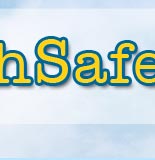|
Schools are cracking down on students with discipline problems by implementing a record number of “out-of-school suspensions.” Do such suspensions do more harm than good?
The incidence of “out-of-school suspensions” is increasing dramatically. For example, the Chicago public school system suspended over 20,000 students in 2003, more than doubling the rate over the past decade. The major reasons offered by principals for such suspensions are fighting, students’ use of profanity, disrespect toward school staff, and violation of Zero Tolerance Policies. There is much controversy over the effectiveness of school suspension since it does not teach students more effective ways to handle conflict. Instead, it results in a loss of academic instructional time for a subgroup of students who need it most. Moreover, the disproportionate number of African American students who are suspended is troublesome. This has led some critics to characterize such suspension policies as a way to disenfranchise groups of children from their education. |
Doesn't out-of-school suspension send an important message to the offending student as well as to other students?
There is no research to support a deterrent effect of suspensions. An analogous situation in the adult world is the fact that prisons are full of people who knew precisely what might happen if they were caught. The reason that most students obey the rules has more to do with the expected benefits that come with acceptable behavior than fear of punishment for misbehavior. School can be a very rewarding environment for those who have the dispositions and skills to function in it competently. The wrong “message” is being sent to the offending student who is suspended out-of-school. That message is: “You as a person are so repugnant to us that you do not even deserve our attention or support.” |
Won't problem behavior increase when the students know they won't be suspended out-of-school?
Problem behaviors in school escalate when segments of the student body find themselves without the skills necessary to behave in a desirable manner. Skills such as academic competence, anger management, impulse control, conflict resolution, and social problem-solving are important for effective participation in the academic environment. When larger and larger groups of students lack one or more of these competencies, the potential for escalating problem behavior increases. Rather than asking, “Why did this student misbehave?” it is more useful to ask, “What does this student need to know and be able to do to behave appropriately?” |
Is it all on the administrator’s shoulders, or do teachers have a role in helping to reduce suspensions?
Teachers should play a major role in the effort to reduce out-of-school suspension. The first line of prevention is in the well-managed classroom. The chances that a student will be suspended are reduced to almost zero if that student is not sent to the administrator for discipline. Consequently, all efforts to reduce out-of-school suspensions must include an assessment and, if necessary, training in classroom management skills. Skilled classroom managers create conditions that reduce the potential for misbehavior through structure, differential instruction to meet academic needs, and the fair and consistent application of classroom-level consequences for rule infractions. Administrators should consult with “high-referring” teachers and engage in problem-solving strategies to enhance classroom management skills. In addition, behavioral management strategies in public areas such as the lunchroom, commons, and hallways should be assessed for adequate policies and supervision. IMPROVING CLASSROOM BEHAVIOR MANAGEMENT |
Rather than suspend out-of-school, what can be done to send a clear message that the behavior is unacceptable?
Students who are referred to the administrator for a documented rule violation should face some form of aversive or unpleasant consequence. The violation should not be inadvertently reinforced by the attention it received. Most minor violations should be managed at the classroom level without an office referral. However, when this is not possible, the administrator should be able to select from a menu of in-school aversive consequences that the offending student will find unpleasant and/or inconvenient and will send the message that an important behavioral guideline has been violated. Possible consequences include:
1 Phone call to parents and/or a parent conference
2 After school or lunch detention
3 Co-curricular activity suspension (sports or clubs)
4 Restitution (financial or social, such as a written apology)
5 Community service around the school
6 School-based or home-school contingency contract
7 Saturday school
For further alternatives see LEVELS OF INTERVENTION |
What should be done with serious offenders or the chronic offenders who seem to violate the rules almost daily?
For more serious violations of the school Code of Conduct or for students for whom the above consequences proved insufficient, schools need to institute learning-based consequences. In general, these take the form of in-school suspension programs or alternative site suspension programs. The advantages of these programs are:
? The student remains in a supervised setting thus eliminating the possibility for community misbehavior or personal injury.
? Academic involvement is maintained.
? Counseling for skills development to avoid future transgressions can be accomplished.
? In a school based program, the student’s behavior, not the student, is the focus of the consequence. |
What are some existing models for in-school suspension?
http://www.kysafeschools.org/pdfs&docs/clearpdf/issuesbriefs/iss.pdf
This site outlines key elements for an effective in-school suspension program. It emphasizes the need to move beyond the “holding-tank” model toward academic support and behavioral skills training. Model forms are provided.
http://www.naesp.org/ContentLoad.do?contentId=485
This website describes the Student Advisory Center which is a model middle school program. The focus is on helping students understand the decision-making process and to acknowledge that they are responsible for their actions. Students receive counseling and one-on-one instruction designed to help them modify their negative behavior patterns. A list of rules and procedures is included. |
What are some existing models for off-site alternative to suspension models?
http://www.kyrene.org/preventionservices/kyrene_alternative_to_suspension.htm
In this 15-day, counseling-based program, students are assessed and then instructed in core academic subjects, character education, positive leadership skills, positive peer and group interactions, decision-making skills, and other behavioral support. Successful completion of the program removes the original infraction from the student’s record.
http://www.warren.k12.ky.us/Schools/ASP/home.htm
This program is a short-stay (1-3 days) suspension. The daily schedule includes academics, group counseling and community service.
http://www.fcps.net/sa/support/community-service.htm Lexington, KY
This program places its emphasis on community service as an alternative for students who would otherwise receive an out-of-school suspension. Contact information is available. |
What if a student’s behavior is truly serious - fighting, threatening teachers, drug possession, weapon possession? Is out-of-school suspension wrong in all cases?
A major responsibility of the administrator is the safety and well-being of all students and staff. There are circumstances in which the removal of a student from the school property is mandated. In these instances, the administrator is charged with protecting all of the persons involved, seeking appropriate consequences and working to reduce the possibility of a recurrence of the problem. A “best practices” situation allows for the availability of an interim off-site alternative placement location to which a student can be referred immediately. This option also reduces the possibility that the student will be sent home to an unsupervised environment where additional problems may occur. From this interim site, further behavioral responses may be developed, including an alternative site or in-school suspension. If this is not available, then the administrator needs assurance that adequate parental supervision will be in place for the brief period of out-of-school suspension while behavioral plans are developed. |
|
|
 |







